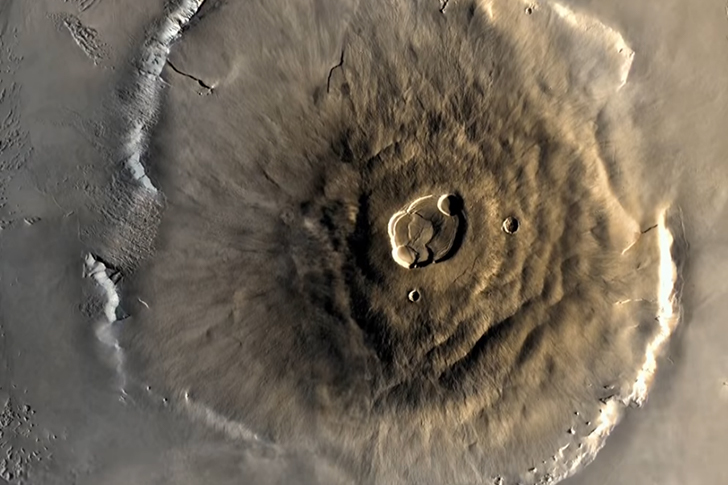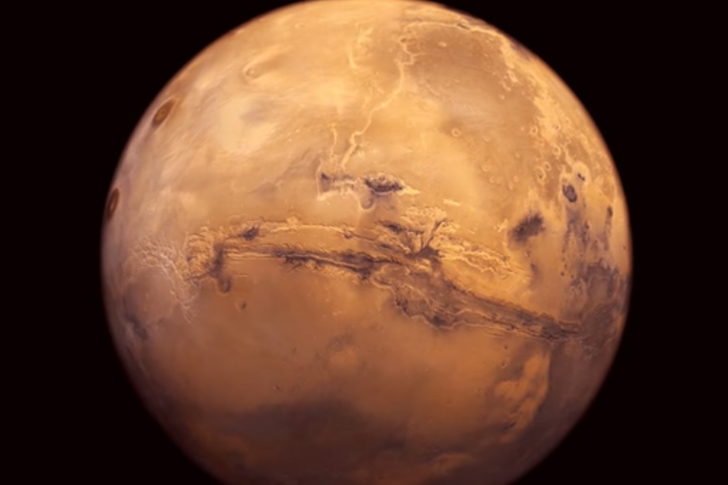The Red Planet: The Interesting Places We Can Find On Mars

Ever since the earlier years of man, people always had some degree of fascination for the unknown. Thanks to this curiosity to discover and explore, more and more things have come to our attention, and this drive to learn continues to this day. With that said, despite the many innovations and breakthroughs we have made through countless generations, there are still things yet to uncover, one of which is something that’s always on top of our heads, beyond the blue skies. Although there’s still a ways to go before space travel becomes a thing we all have access to, scientists and researchers have already had the chance to take a glimpse at what lies in the great unknown, which we all call outer space. A few significant findings in this regard involve the planet Mars. Now, without further ado, let’s take a look at a few of these interesting places found on the red planet, shall we?

Olympus Mons
Like Earth, Mars has plenty of landforms scattered around its surface. One such example worth noting is its Olympus Mons, the solar system’s largest volcano.
Thanks to the investments made for studying the red planet, we now have a glimpse of what this large landform looks like. Like many of Earth’s biggest volcanoes, Olympus Mons is a shield volcano, meaning it’s wide as it is tall. What that means is that instead of blowing up when it erupts, Olympus Mons oozes out lava, which eventually helps it grow in width and height. With its figure standing at 25km and a diameter of 624km, Olympus Mons is a hundred times larger than our blue planet’s largest volcano, Mauna Loa, which is 10km high and 120km from end to end. To top it off, Mars’ massive volcano is big enough even to fit all of Hawaii’s islands!

Valles Marineris
Hundreds of millions of years ago, Earth was composed of one big island called Pangaea, surrounded by a massive ocean known as Panthalassa. As time went on, the supercontinent began to break down, eventually making the seven continents we all know today. This occurrence eventually developed the plate tectonic theory, a concept stating that all the planet’s lands and oceans are on top of large plates that move from time to time, causing the Earth’s surface to change. As it turns out, this phenomenon isn’t apparent on Earth alone.
With the massive amount of investment money spent on researching, scientists can now have high-quality images of another planet’s geography, and that includes Mars! One such area that can be seen even from space is the red planet’s Valles Marineris. It’s a canyon that’s 7km deep and 4000km long, making the Earth’s Grand Canyon look like a pothole on the road in comparison. With that said, its origin has some degree of resemblance to how our planet’s continents came to be. Due to various factors, such as its changing temperatures, a portion of Mars’s tectonic plate gradually became so brittle, to the point it cracked and split apart, making the canyon now known as Valles Marineris.

Ghost Dunes
Things come and go, but that doesn’t mean they just disappear without a trace. From dinosaurs to ancient civilizations, there’s always something left behind to credit their existence, be it ancient artifacts or fossilized skeletons. Well, the same can also be said about Mars’ Ghost Dunes.
Around 2018, researchers found these interestingly shaped areas on the red planet. After further studying, it is said that these shapes, also known as Ghost Dunes, were dunes that formed perhaps a hundred years ago. Although these landforms have since gone with the wind, it’s thanks to the planet’s lava or sediments seeped through the dunes’ lower contours, hardening and preserving it as a result. More than 400 of these dunes can be found around Mars, and researchers speculate there’s still some sand left in them. Plus, with their studies on Earth showing dunes as reliable shelters for microbial life, perhaps the same can also be said about Mars’ Ghost Dunes – or at least before they became Ghost Dunes, that is.
Photo Sources:
Cover – YouTube / National Geographic,
Photo #1 – YouTube / Dreksler Astral,
Photo #2 – YouTube / Astrum
Photo #3 – YouTube / AGU

Recent Comments